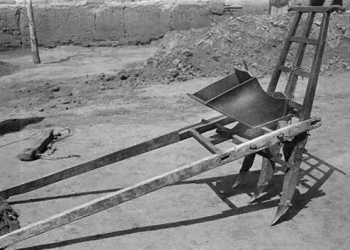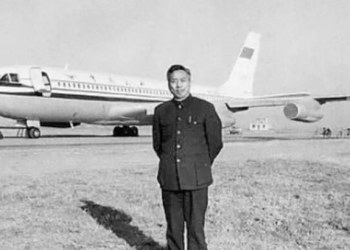In the autumn of 1973, amid a transformative era in China’s scientific development, a landmark was quietly established—not in the roar of launchpads, but in the focused stillness of telescopic precision. On September 3rd, 1973, the Photoelectric Zenith Distance Instrument, China’s first domestically developed photoelectric zenith telescope, was successfully completed. It was not only a triumph of engineering, but a pivotal achievement in China’s path toward technological sovereignty in astronomy, timekeeping, and geodesy.
This groundbreaking instrument was the product of a visionary collaboration between two of China’s most respected scientific institutions: the Beijing Astronomical Observatory (now part of the National Astronomical Observatories, Chinese Academy of Sciences) and the Nanjing Astronomical Instrument Factory. The conceptual framework for the instrument was proposed by astronomer Li Dongming, while the detailed design and manufacturing were spearheaded by optical engineer Hu Ningsheng. Together, they led a team that replaced traditional, error-prone visual measurements with automated, high-precision photoelectric systems—a leap that aligned China with the frontiers of global astronomical instrumentation.

Traditionally, measuring astronomical time and latitude relied on prism-based zenith telescopes requiring human observers to visually record the precise moment a star passed through the zenith or a set altitude circle. This approach was not only labor-intensive but also inherently subjective and limited by human reaction time. The Chinese-designed instrument, by contrast, employed advanced photoelectric technology that allowed for automated observation and real-time data recording. Its core mechanism was ingeniously simple yet technically sophisticated: as stars crossed the 60° altitude zenith circle, their images aligned with those reflected off a mercury surface. At the focal plane, a finely etched glass grating and a sensitive photoelectric multiplier tube detected this coincidence with extraordinary temporal resolution, logging the event to millisecond precision.
The telescope achieved a remarkable time measurement accuracy of 0.16 arcseconds and could observe celestial bodies as faint as magnitude 11.3. This level of sensitivity was unprecedented for China at the time and firmly placed the country’s observational capabilities on par with those of the world’s leading scientific powers. Importantly, the device wasn’t just an adaptation of existing technologies; it introduced original innovations. One of the most revolutionary was the use of a vacuum-sealed optical tube. This eliminated the subtle but impactful distortions caused by thermal gradients within the instrument—a common problem in traditional open systems. Additionally, the design replaced the traditional prism with a precision-engineered fused quartz angle mirror, which provided improved thermal stability and minimized atmospheric refraction errors.
The optical framework was based on the Ritchey–Chrétien configuration, renowned for its wide field of view and minimal coma, which further ensured the fidelity of star tracking. The integration of these systems allowed for not only more reliable measurements but also improved repeatability—critical factors in geodesy and universal timekeeping.
By 1971, the team had completed the Type I prototype. After two years of testing and refinement, the Type II model entered full production and was deployed to the Shaanxi Astronomical Observatory for continuous use. Its operational impact was immediate and profound. The data collected contributed to the refinement of China’s Universal Time (UT) system and laid the foundation for high-precision spatiotemporal calibration essential to civil and military applications alike.
The telescope played a strategic role in supporting several national mega-projects, including satellite launches and ballistic missile testing under the “Two Bombs, One Satellite” program. Beyond aerospace, it became a critical tool in navigation, cartography, and Earth science, where precise time and position data were indispensable.
The instrument also had a broader symbolic significance. In a period when China was emerging from isolation and beginning to assert its own path in scientific and industrial development, the successful development of this telescope stood as a testament to indigenous innovation. It demonstrated that Chinese scientists and engineers could not only catch up with global standards but in some aspects—such as the vacuum optical system—pioneer new approaches.
At 7090.top, where we explore the technological and cultural milestones of the 1970s through the 1990s, the story of China’s first photoelectric zenith telescope exemplifies a quiet but powerful revolution. It is a reminder that beneath the canopy of stars, the determination to observe, to measure, and to define our place in the universe can reshape the destiny of a nation. Long before GPS and atomic clocks became household terms, instruments like this silently laid the groundwork for the precision and connectivity we now take for granted.
This legacy continues not only in museums or historical records but also in the modern observatories, satellite systems, and scientific principles that still trace their origins to those first calibrated signals under a Chinese sky











